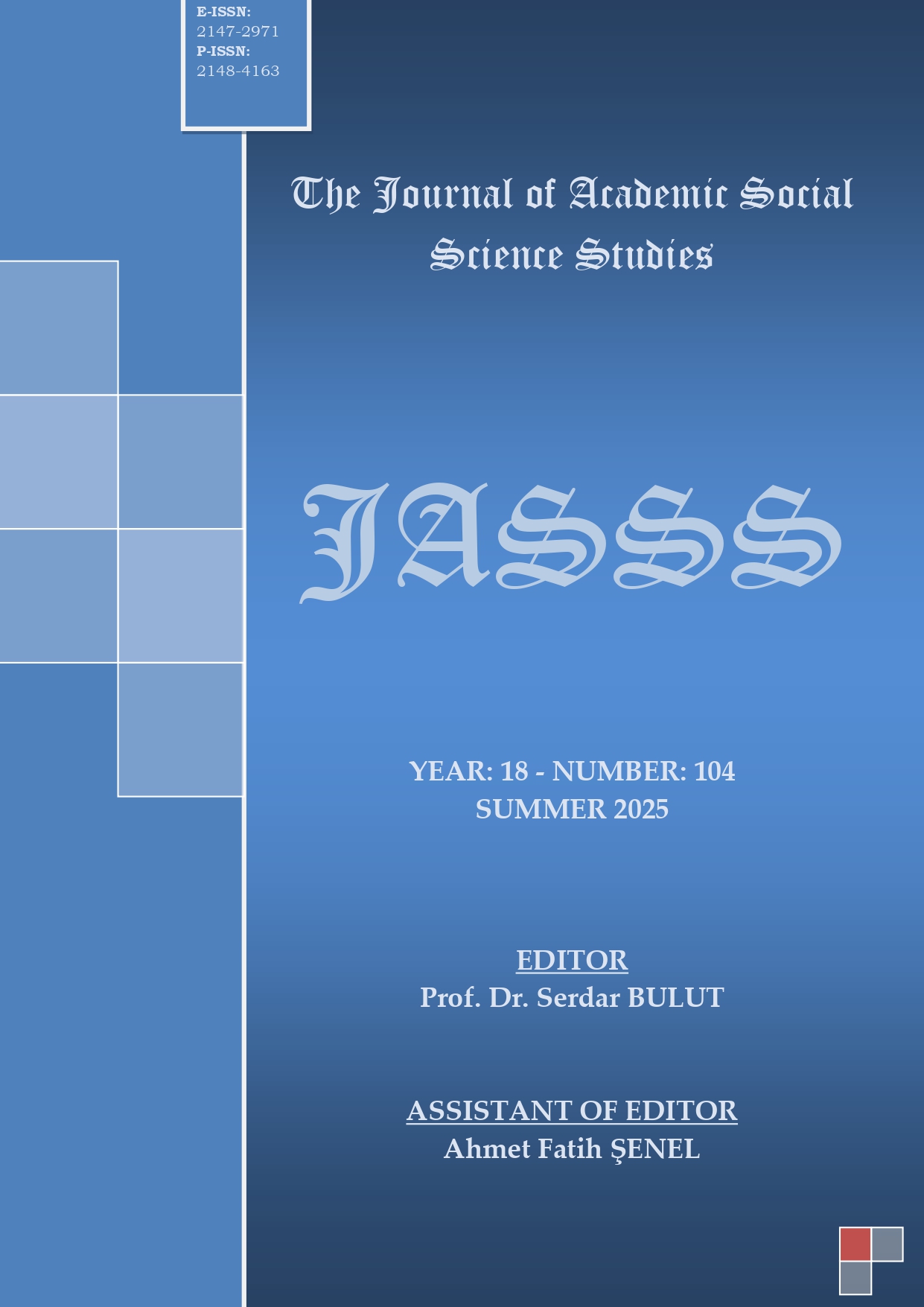Author :
Abstract
Bu çalışma ekonomik istihbarat ve ekonomik espiyonaj kavramlarının gelişimini ve eğilimini bibliyometrik analiz yoluyla ortaya çıkarmayı amaçlamaktadır. Bu çerçevede 1962-2025 yılları arasında Scopus veri tabanında yayımlanan 79 farklı kaynaktan alınan 101 çalışma incelenmiş olup, çalışmaların yıllık büyüme oranı %-1,09, yıllık ortalama çalışma sayısı ise 14,2 olarak hesaplanmıştır. Bu bulgular, ekonomik istihbarat ve espiyonaj konusundaki literatürün genellikle durağanlaştığını ve bu alandaki araştırmaların sınırlı kaldığını göstermektedir.
Analiz kapsamında yıllar bazında yapılan çalışmaların dağılımı belirlenmiştir. 2018 yılı, sekiz yayınla en fazla yayının yapıldığı yıl olarak dikkat çekmektedir. Bu durum, belirli yıllarda bu alanda yoğunlaşan araştırmaların olduğunu ancak diğer yıllarda ise literatürdeki katkının düşük seviyelerde kaldığını ortaya koymaktadır.
Araştırma kapsamındaki en fazla yayının yapıldığı kaynak "Intelligence and National Security" dergisidir. İkinci en fazla yayın yapılan dergi ise beş yayınla "International Journal of Intelligence and Counterintelligence" dergisi olmuştur. Bu bulgular, bu iki derginin ekonomik istihbarat ve ekonomik espiyonaj konularındaki literatüre önemli katkılarda bulunduğunu ve bu alandaki araştırmaların büyük bir kısmının bu dergilerde yayımlandığına işaret etmektedir.
Çalışmaların yazarlarının bağlı olduğu kurumları ilginç bir şekilde çeşitlenmiştir. 52 farklı kuruma bağlı yazarlar ekonomik istihbarat ve espiyonaj konularında çalışmalar yapmıştır. Bu çeşitlilik, konunun dünya çapında geniş bir ilgi gördüğünü ve farklı kurumlardan araştırmacıların bu alanda katkı sağladığını göstermektedir.
Sonuç olarak, ekonomik istihbarat ve ekonomik espiyonaj alanındaki literatürün, daha fazla işbirliği ve disiplinler arası yaklaşımlar ile güçlendirilebileceği söylenebilecektir .Ayrıca, yıllar arasındaki yayın ve atıf sayılarındaki farklılıklar, bu alandaki araştırma ilgisinin zaman zaman düştüğünü göstermektedir. Bu sebeple bu boşukların giderilmesi için yeni çalışmalar yapılmasının gerektiği söylenebilir.
Keywords
Abstract
This study aims to reveal the development and trend of the concepts of economic intelligence and economic espionage through bibliometric analysis. Within this framework, 101 studies taken from 79 different sources published in the Scopus database between 1962-2025 were examined and the annual growth rate of the studies was calculated as -1.09% and the annual average number of studies was 14.2. These findings shor that the literatüre on economic intelligence and espionage has generally stagnated and research in this field remains limited.
The distribution of studies conducted on a yearly basis was determined within the scope of the analysis. 2018 stands out as the year with the highest number of publications with eight publications. This situation reveals that there were studies focusing on this field in certain years, but the contribution to the literatüre remained low in other years.
The source with the highest number of publications within the scope of the research is the "Intelligence and National Security" journal. The second most published journal was the "International Journal of Intelligence and Counterintelligence" with five publications. These findings indicate that these two journals have made significant contributions to the literatüre on economic intelligence and espionage, and that a large portion of the research in this field has been published in these journals.
The institutions to which the authors of the studies are affiliated have been interestingly diverse. Authors affiliated with 52 different institutions have conducted studies on economic intelligence and espionages. This diversity shows that the subject has attracted widespread interest worldwide and that researchers from different institutions have contributed to this field.
As a result, it can be said that the literatüre in the field of economic intelligence and economic espionage can be strengthened with more collaboration and interdisciplinary approaches. In addition, the differences in the number of publications and citations between years indicate that the research interest in this field has decreased from time to time. For this reason, it can be said that new studies are needed to fill these gaps.





